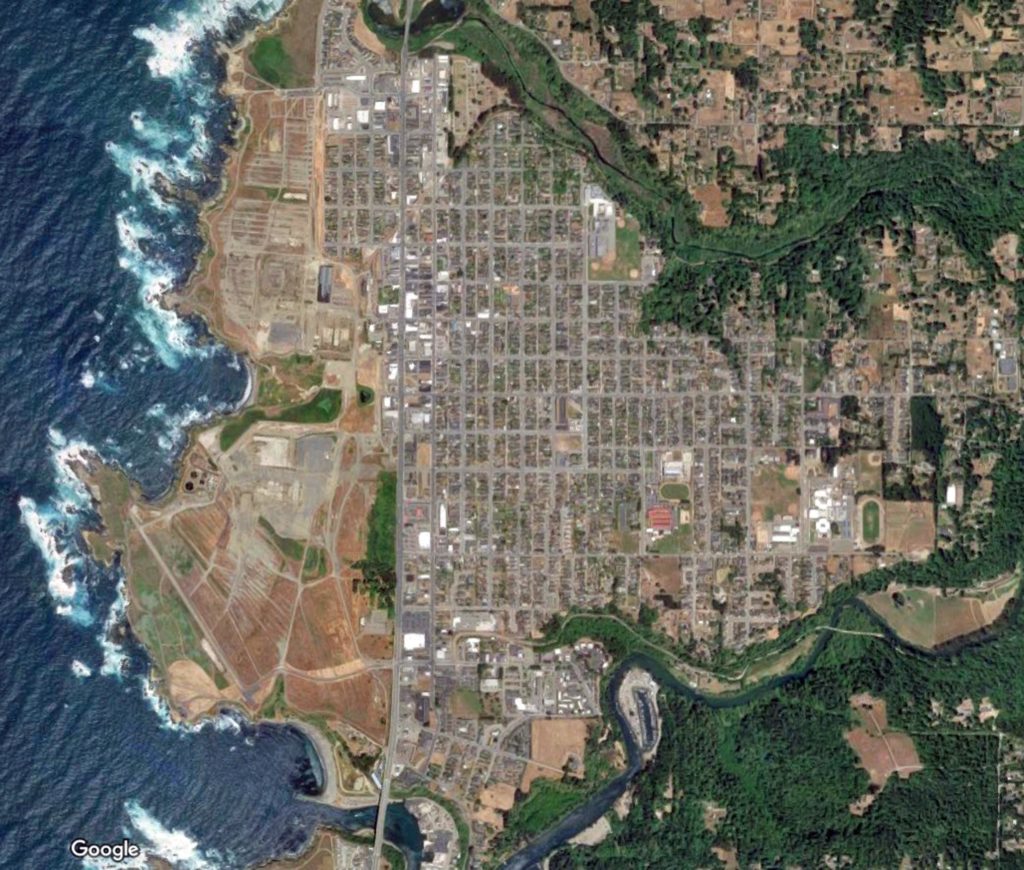By Mary Callahan, The Press Democrat, November 24, 2021
“The owner of Fort Bragg’s iconic Skunk Train now owns nearly the entire west side of town after using its status as a federally recognized railroad to [obtain] the vacant Georgia-Pacific mill site through eminent domain [after agreeing to pay $1.23 million for the land].
“Whoever possesses the more-than-300-acre bluff-top property ― with its sweeping views of the coastline and ocean ― will control the type and scale of new residential, business, and tourist-oriented development in a community badly in need of renewal.
“Officials with the Mendocino Railway, owner of the Skunk Train, … are ready to move forward with a unified plan for the roughly 375 acres it now holds.
“But for city officials, the railway’s acquisition amounts to an end-run [around a city plan that] would have allowed for greater civic involvement, enhanced environmental oversight, and greater public good.
“The city has filed a suit in Mendocino County Superior Court challenging the railway’s standing as ‘a common carrier providing transportation.’ The suit seeks to ensure the railway complies with city ordinances, codes, and authorities.
“[The] railway’s plan to run the Skunk Train line to Glass Beach and along a relatively new public coastal trail at the very edge of the mill site will not be subject to environmental review even though most coastal development undergoes oversight by the California Coastal Commission. [Mendocino Railway] said anything except railway-related activities ― housing, commercial uses, a hotel ― would be subject to the planning and permitting process.
“[Fort Bragg Vice Mayor Jessica] Morsell-Haye said the city was tantalizingly close to finalizing its own deal with Georgia-Pacific for the remaining real estate, working with several other agencies, including state parks and the Sherwood Valley Band of Pomo Indians, only to lose out to the railway.”
Read the full article here. (~6 min.)

See the city’s 2009 vision plan for the site here, and the 2012 Mill Site land use plan here. The article notes, “the city envisioned expanded open space and inroads toward a new ‘blue economy’ focused on ocean resources and resilience.”

